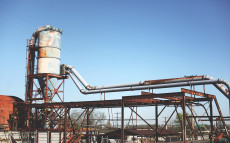- pathfindersAI
- Job Profile
Tailors, Dressmakers, and Custom Sewers
Summary
Tailors, Dressmakers, and Custom Sewers: Crafting Elegance and Precision
What They Do
Tailors, dressmakers, and custom sewers specialize in creating and altering garments to fit individual clients with unparalleled precision. They bring to life the intricate visions of designers or fulfill the bespoke needs of clients by employing a unique blend of artistry and technical skill. These professionals work with a variety of fabrics, materials, and fashion styles, ensuring that each creation meets specific measurements and design specifications. A tailor might focus on formal wear such as suits and coats, while a dressmaker often works on dresses and other more specialized garments. Custom sewers, on the other hand, may bring avant-garde designs to fruition or craft custom pieces that reflect a client’s personality and desires.
Job Responsibilities
The responsibilities of tailors, dressmakers, and custom sewers are multi-faceted and demand an exceptional eye for detail. Their primary task is measuring clients to ensure the perfect fit of garments. They draft, alter, and repair clothing, often completely transforming a piece. By cutting and assembling fabric according to patterns, they ensure the precision of each seam and stitch. Beyond fitting, they also advise clients on style, fabric choices, and garment care, fostering a collaborative experience. These professionals often handle complex alterations and repairs, reflecting their deep understanding of garment structure and design. They also maintain and repair their own sewing equipment, ensuring that their tools are as perfect as their craftsmanship.
Essential Skills
A robust skill set is essential for anyone aspiring to excel as a tailor, dressmaker, or custom sewer. Firstly, one must possess excellent manual dexterity and hand-eye coordination to handle delicate fabrics and intricate details. Precision is paramount; meticulous attention to measurements and cuts ensures a flawless final product. Creativity and artistic vision are equally important, allowing these professionals to conceptualize and execute unique designs. Strong problem-solving abilities are needed to address fit or design issues effectively. Additionally, interpersonal skills are critical, as discussing options, making recommendations, and achieving client satisfaction rely on clear, empathetic communication. Lastly, proficiency with various sewing tools and machinery enhances efficiency and precision in their craft.
Educational Pathways
While formal education is not always a prerequisite, tailoring, dressmaking, and custom sewing benefit greatly from structured learning. Aspiring professionals might start with vocational or technical schools that offer courses in sewing, fashion design, and fabric study. Community colleges frequently provide associate degrees or certification programs in fashion technology or related fields. These programs encompass a wide array of subjects, from pattern making and garment construction to textile science and fashion history. Some might choose to hone their skills and gain real-world experience through apprenticeships or on-the-job training with established professionals. Regardless of the path, continuous learning and practice are essential to mastering the evolving techniques and trends in fashion.
Career Prospects
The demand for skilled tailors, dressmakers, and custom sewers remains robust, offering numerous career prospects within the fashion and garment industries. Many find fulfilling roles in fashion retail establishments, clothing manufacturers, or bespoke tailor shops. There is also the opportunity to work in theatrical costume design for the performing arts or on custom assignments for high-profile clients. Some may choose to offer freelance services, establishing their own businesses to cater to a personalized client base. With experience, professionals can advance to supervisory roles or start their own fashion labels. The versatility of these skills ensures that career opportunities are diverse and plentiful.
Conclusion
Tailors, dressmakers, and custom sewers occupy a unique niche within the fashion industry, blending artistic flair with technical prowess to produce garments that are as individual as their clients. With a keen eye for detail, creative vision, and a commitment to quality, these professionals transform fabric into wearable art. Educational pathways, whether formal or through apprenticeships, prepare them for a career replete with opportunities and personal satisfaction. As fashion continues to evolve, the timeless skills of tailoring and dressmaking will always remain in demand, offering a fulfilling and dynamic career for those dedicated to the craft.
Video
Compensation
| State | Median Salary | Median Hourly | Positions |
|---|---|---|---|
| AL | 34,770 | 16.72 | 130 |
| AK | 36,110 | 17.36 | 40 |
| AR | 26,750 | 12.86 | 70 |
| CA | 45,090 | 21.68 | 1,820 |
| CO | 37,240 | 17.90 | 150 |
| CT | 43,420 | 20.88 | 190 |
| FL | 33,990 | 16.34 | 1,200 |
| GA | 33,510 | 16.11 | 500 |
| ID | 31,200 | 15.00 | 120 |
| IL | 29,640 | 14.25 | 230 |
| IN | 36,960 | 17.77 | 230 |
| IA | 36,540 | 17.57 | 60 |
| KY | 29,360 | 14.12 | 130 |
| LA | 32,700 | 15.72 | 210 |
| MA | 44,240 | 21.27 | 760 |
| MI | 32,720 | 15.73 | 600 |
| MN | 34,600 | 16.64 | 380 |
| MS | 31,950 | 15.36 | 150 |
| MO | 47,130 | 22.66 | 110 |
| NE | 27,820 | 13.38 | 230 |
| NV | 41,300 | 19.86 | 70 |
| NH | 33,600 | 16.16 | 50 |
| NJ | 36,830 | 17.71 | 680 |
| NY | 34,660 | 16.66 | 1,880 |
| NC | 34,890 | 16.77 | 200 |
| OH | 36,540 | 17.57 | 330 |
| OK | 37,210 | 17.89 | 70 |
| OR | 36,640 | 17.62 | 160 |
| PA | 31,870 | 15.32 | 240 |
| SC | 38,470 | 18.50 | 180 |
| TN | 40,820 | 19.62 | 50 |
| TX | 36,170 | 17.39 | 1,300 |
| UT | 34,700 | 16.68 | 330 |
| VA | 34,340 | 16.51 | 650 |
| WA | 39,520 | 19.00 | 370 |
| WV | 31,950 | 15.36 | 70 |
| WI | 35,690 | 17.16 | 270 |
Similar Occupations
In this area you will find other occupations that are close to the one you were viewing in tasks, knowledge and work environment. If the primary job profile you are viewing isn't quite to your liking, take a look around and see what else is available.
Basic and Premium Accounts have more alternative occupations available than the Free account.

Fabric and Apparel Patternmakers - 51-6092.00
Fabric and Apparel Patternmakers create templates for the construction of clothing and other textile products, ensuring precise measurements, shapes, and styles align with design specifications. They transform designers' concepts into detailed pattern pieces that guide the cutting and assembly process in garment manufacturing.
-
$62,510/yr
Median Pay -
2,670
Number of Jobs

Fashion Designers - 27-1022.00
A fashion designer conceptualizes and creates original clothing, accessories, and footwear by sketching designs and selecting fabrics, patterns, and colors. They stay current with trends and often oversee the production of their designs to ensure quality and alignment with their artistic vision.
-
$79,290/yr
Median Pay -
19,940
Number of Jobs